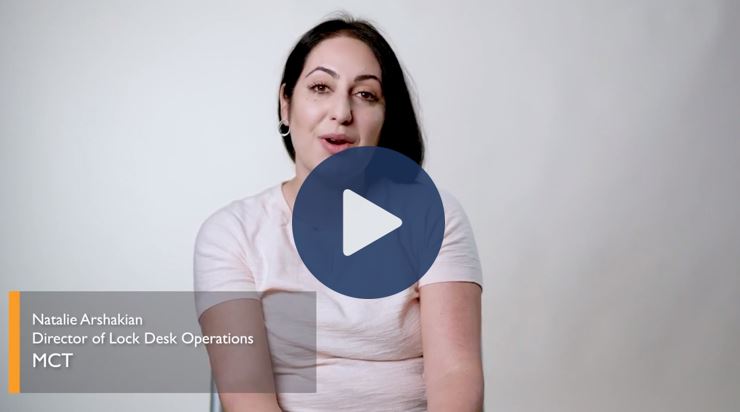This paper is based on expert opinions and analysis, with no basis in communication or approval from FHFA or the GSEs themselves.Over the first half of 2021, the Federal Housing Finance Agency (FHFA) made changes to disrupt the then-current government-sponsored enterprise (GSE) model and scale down the footprint of Fannie Mae and Freddie Mac. With a new director (Sandra Thompson) awaiting confirmation, the directive appears to have changed. FHFA rescinded Freddie Mac and Fannie Mae’s controversial 50-basis point adverse market refinance fee and knows of lenders’ desire to see the elimination of the 7 percent cap on GSE purchases of mortgages for investment properties and second homes. There has also been talk of reviewing the Preferred Stock Purchase Agreement (PSPA) with the U.S. Treasury.We sat down with our COO Phil Rasori and Rob Chrisman of the Chrisman Commentary at the California MBA’s Western Secondary Conference to review the actions of the previous FHFA Director, look forward to what we can expect under a new FHFA Director, and discuss the privatization aspect of mortgage lending which promotes a free market argument without the government being the main source of financing for residential mortgages.
The Previous FHFA Regime
The deterioration in the housing markets leading up to the last global financial crisis saw Fannie Mae’s and Freddie Mac’s (the GSEs) financial conditions so damaged that the two were placed under “conservatorship,” or control by the federal government. While there was a catastrophic implicit guarantee before 2008, it became explicit after the crisis. Since that time, FHFA has acted as a decision maker for the GSEs. The conservatorship has helped stabilize the housing market since 2008, but PSPA changes in January 2021 put a strain on the GSEs’ ability to support a national housing market and underserved communities. Ex-Director Mark Calabria was very clear that he was trying to disrupt the current model. In the eyes of lenders, it would be one thing for FHFA to make changes that would scale back the GSE footprint, but he provided no lead time to implement changes, leaving himself open to legit criticism across the mortgage political aisle. While he didn’t want the Agencies to go completely away, per se, he was very explicit about Fannie and Freddie having a reduced role. At the beginning of the COVID-19 crisis, FHFA began charging lenders either 5 percent or 7 percent of the loan’s value to sell the loan in forbearance to the GSEs. Cash-out refinances were not included in loans being purchased. There was the 50-basis point adverse market refinance hit with no warning, as well as PSPA changes. All of which introduced uncertainty into the secondary market. “The optics were less than desirable,” says Rasori. “Lenders didn’t know at beginning of April 2020 where their loan production was heading and how much of a liquidity crisis the average American would have, so FHFA taking away ability of homeowners to get cash out of their largest asset was not viewed as a logical move by the industry. ”Director Calabria was removed after the Supreme Court ruled on June 23, 2021, however, that FHFA’s single-director structure was unconstitutional (Collins v. Yellen). Subsequently, Sandra Thompson was named FHFA’s Acting Director by President Biden. She has already shown herself to be amenable to ameliorate, pause or eliminate the problematic changes implemented under the former administration. Join our newsletter to stay abreast of timely market updates in the future!
Impact of the Old Director
While it became very clear to those in the industry that private mortgage lenders had made so much money through summer of 2020 that FHFA saw the need to implement changes to build capital, the speed of implementation and lack of advanced warnings caught many off guard and threw lenders into uncertainty. “There was certainly an economic argument in creating revenue for the Agencies by pushing through the 50-basis point adverse adjustment. But with no lead time for lenders to price in the change to pipelines coupled with FHFA intimating there would continue to be changes, it created uncertainty that manifested itself in inefficiency which translated to higher margins on the front end,” says Chrisman. “The academic argument could be made that the costs to borrowers were increased by more than what the Agencies made on the adverse fee due to uncertainty introduced into the process.” The caps on non owner-occupied and second homes represented an outsize risk premium paid by those borrowers to help pay for low-income borrowers. The result was some green shoots began “sprouting” in the non owner-occupied world. “We saw the largest aggregators cutting deals with clients saying the client can deliver up to 20 percent non owner-occupied homes with additional restraints on second homes, which is a much bigger number than at what the industry was originally indexed,” says Rasori. If the market for those loans is taken private, it begs the questions how the cost is both affected and paid for to finance riskier borrowers for the GSEs.” One can arrive at the conclusion that every major disruption in the secondary market since 2019 was from the previous regime at FHFA. FHFA understands the secondary market for lenders quoting pricing on the front end so would have been fully aware of the disruptions it was causing by pushing changes through with no warning. Fast forward now and it is hard to see lenders pleas getting worse. Lenders have already applauded the removal of the 50-basis point adverse market refinance fee (proving FHFA isn’t single-mindedly profit oriented), which bodes favorably for future decisions from a lender’s perspective.
Moving Forward
The decision by the Biden Administration to implement a new FHFA director paints the moves Calabria was trying to push (like the PSPA, which came six days before inauguration of new presidential administration) as a Hail Mary attempt to strip the GSEs of influence. When it comes to the acting Director and her priorities, the highest probability would be to slow some of the changes made by the previous regime down. “The Agencies weren’t the majority of the lending in the run-up to the 2007 collapse in mortgage, and do not have to represent the majority of lending moving forward,” Chrisman says. “The quality of the borrower is much higher now than it was pre-financial crisis. On average, the industry now originates at lower LTVs and higher credit scores, requires much more advanced documentation when it comes to income and assets, and on the whole is a well-functioning market that isn’t creating a bubble.”
Both Chrisman and Rasori Agreed on the Following:
-Consensus among lenders is that if there was a 120-day lead time on changes, meaning they could be assimilated into market without any pipeline losses, it would be a healthy operating procedure even if a lender was against the actual policy.-We could potentially see the elimination of risk overlays on high DTIs, low LTVs, and first-time homebuyers.-There shouldn’t be a lot of quick, negative changes from a pricing perspective. If anything, you could see maybe the opposite come true.-Focus will be on riskier programs and we should see some work on products for high density living.-There may not be much hope on the second home and non owner-occupied thread because that has not been a demographic Democrats have historically looked to protect.-Less likely, but still possible, we could also see changes to the sweep of profits for the government currently with no dividends for shareholders.-The high G-fees we have seen before under Democratic administrations and payroll tax increases offers no guarantee Liberals wouldn’t repeat those actions.-We could also see the return of some private markets.
Private Markets
“Private lending on a $3 trillion annual scale is not going to happen, so there will always be some sort of government guarantee,” says Chrisman. “We have seen, however, that the jumbo market is a working model rivaling the conventional market. A healthier private market for normal vanilla loans would facilitate more lending in other markets that are not as well served like non-QM.” “The American public has a fascination with fixed rates and the GSEs do not have a large appetite for ARMs, which is all well and good with the flatter yield curve we have had recently,” Rasori says. “ARMs make sense when the yield curve is steep, such as when there was a convexity crisis in August of 2003 and the 2s-10s spread was 280-basis points. So, steepness would mean banks get more competitive on a relative basis if you have more ARMs versus fixed-rate loans. Generally speaking, if the government wants to price itself out of certain loans, that is where the private sector steps in.”
In Conclusion
Since 2008, the GSEs have been in control of FHFA under conservatorship. An exit from conservatorship for the GSEs doesn’t look to be happening anytime soon, but with the termination of the old director and installation of one with different priorities, that means changes to the lending landscape. Lenders breathed a sigh of relief with the change of direction at FHFA. While the mortgage industry is probably not going to see FHFA immediately target protecting landlords and wealthy second home buyers as much as other borrowers, if an initiative addresses the basic charter of getting people into homes, then that will garner FHFA’s focus. The worry that if that particular program does not fit the charter, it could be on chopping block clashes with the reality that without certain programs that are breadwinners, FHFA faces the challenge of how it is going to finance and provide other programs to riskier borrowers. Even with uncertainty, we have seen, through the jumbo market and green shoots in the non owner-occupied and second home space, that the private sector is capable of picking up some slack from the government. That is a good thing, as the government being the main source of lending means a system potentially wrought with inefficiency, dependency, and overregulation. Look for those private markets to continue to flourish. Everyone’s favorite secondary market is a calm secondary market, and the clear direction of FHFA will put the wind in lender’s sails. That is why it is worth staying up to date on future actions of FHFA and what they indicate. To help you make sense of it all, visit the learning center, and join our newsletter.
Do More with MCT!
 Mortgage bankers of every size trust MCT to manage risk, drive operational efficiency, and increase profitability. We would love to help in any way we can by having a one-on-one conversation about your business needs.Interested to learn more about market volatility best practices? Explore our market volatility guidance for lenders or find related articles below. Contact MCT today
Mortgage bankers of every size trust MCT to manage risk, drive operational efficiency, and increase profitability. We would love to help in any way we can by having a one-on-one conversation about your business needs.Interested to learn more about market volatility best practices? Explore our market volatility guidance for lenders or find related articles below. Contact MCT today


